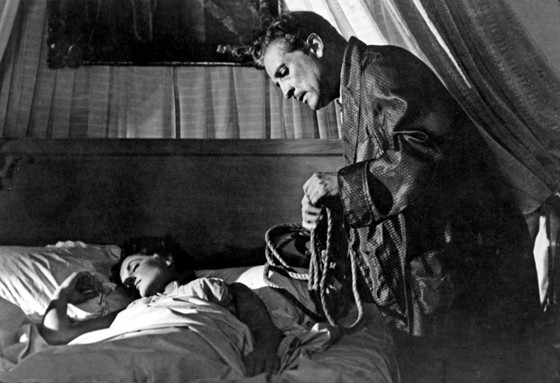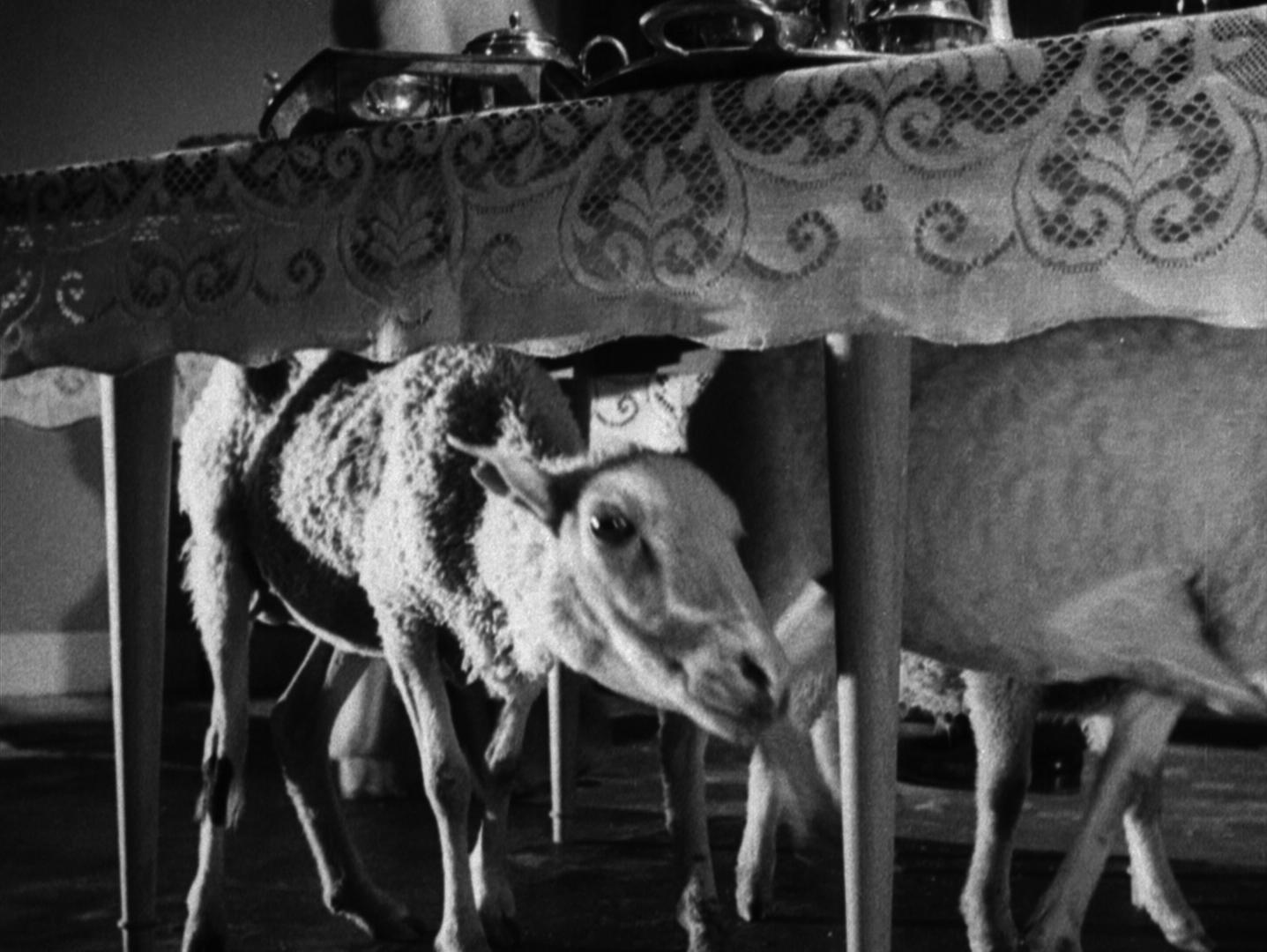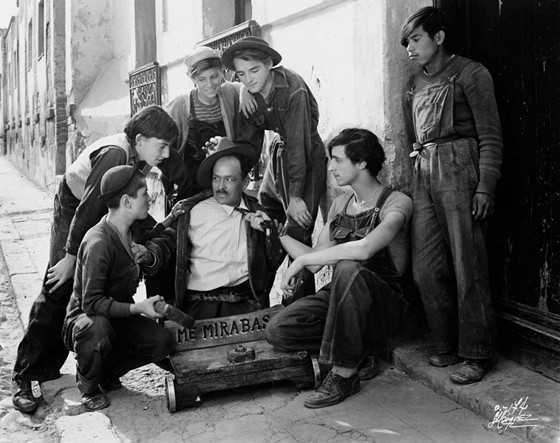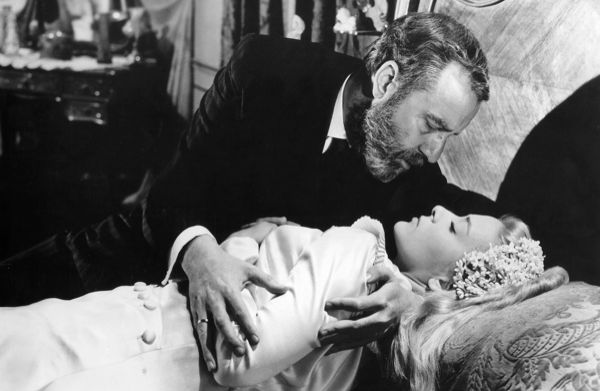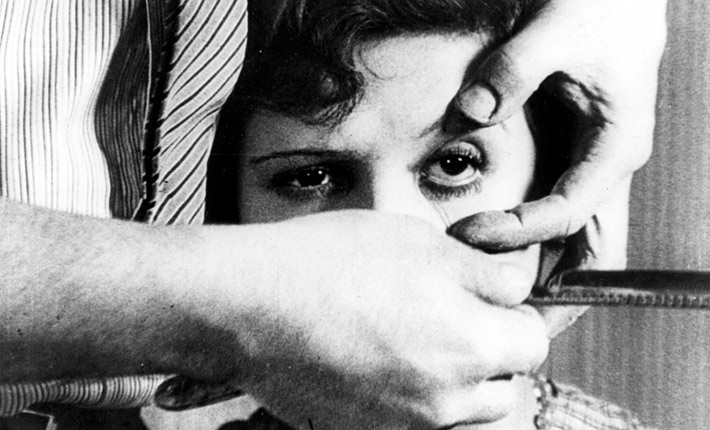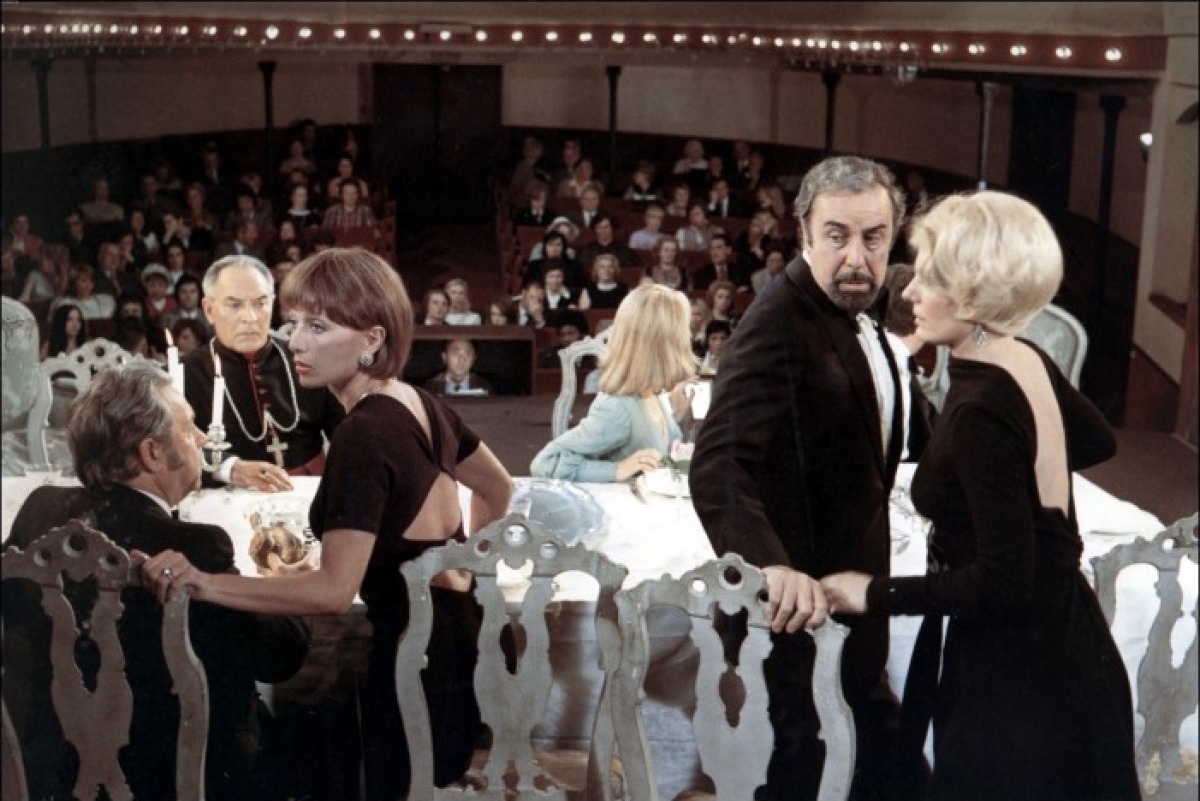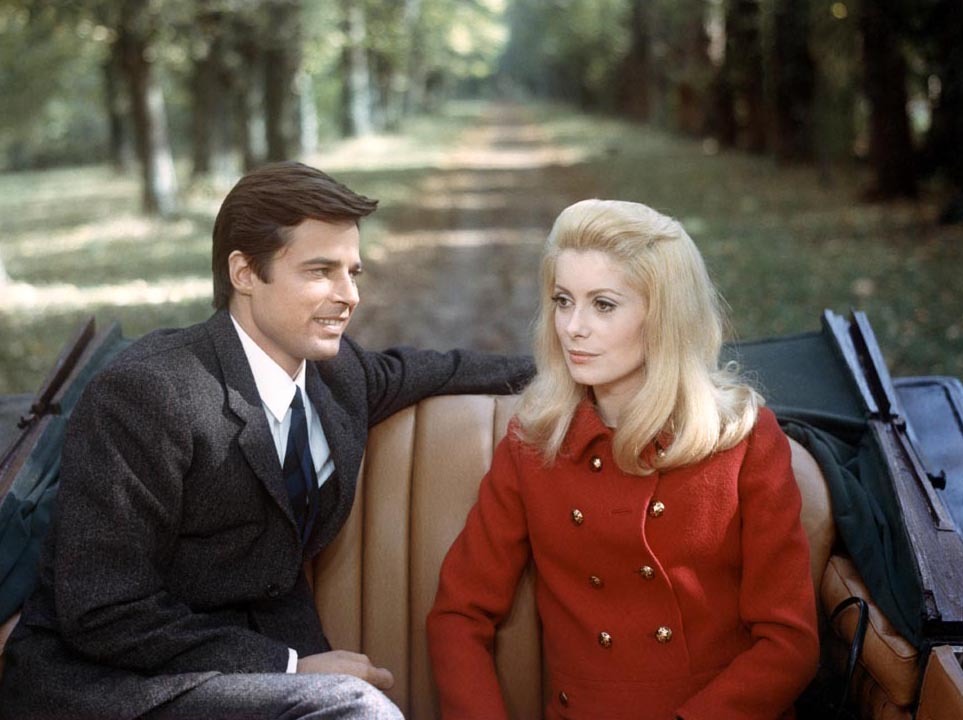7. El (1953)
Francisco (Arturo de Córdova) pursues Gloria (Delia Garcés) when he sees her feet in a church. After stealing her away from her fiancé, Raul (Luis Beristáin), Francisco traps Gloria into a loveless marriage filled with jealousy and violence. He wants to control his wife via any means necessary, including attempting to sew up her vagina (fortunately, Gloria wakes up and screams before any of this transpires).
From its opening sequence of feet to Francisco’s imagination of an entire church laughing at him, El is a masterpiece of psychosexuality. The film brilliantly depicts concepts of male crises and paranoia, showing a man who is lost in his delusional obsessions. Jacques Lacan incorporated El into his famous lectures, using the film as a means of elucidating his theoretical ideas.
6. El angel exterminador (1962)
A group of socialites are invited to a dinner party at a lavish mansion. When they retire to the salon for a nightcap, they soon discover that their attempts to leave are thwarted by an unseen force. As the police try to figure out why the group is trapped in the mansion (the police are unable to enter the mansion due to the unseen force), the group tries to figure out a way to leave their extravagant prison.
Buñuel made El angel exterminador (The Exterminating Angel) after the controversial Viridiana (which prompted Buñuel to return back to exile in Mexico). The film’s absurd situations and surreal images attack ritualistic habits and bourgeois culture, creating a cyclical narrative that ends just like the film began (only this time, the parameters of confinement are those of a large church).
5. Los olvidados (1950)
Pedro (Alfonso Mejía) is a street urchin who is trying to live a better life, even though those around him (including his mother) don’t really care about him. His former friend/bitter rival, El Jaibo (Roberto Cobo), squanders all of Pedro’s opportunities, leading to accusations of theft and Pedro’s sentence to a reform school.
Buñuel adored melodrama because of its subversive elements, so it is not hard to understand why Buñuel was critical of the term “neorealist” being applied to his film. Though the film uses a “neorealist” lens, Los olvidados openly parodies neorealism in order to subvert the idea of the poor being good-hearted. All of Buñuel’s characters are capable of evil, including the blind beggar who has violent/pedophilic intentions.
The film does not intend to show the institutions that keep the poor running in a rat race, but instead it shows the poor as players in the same corrupt societal games, giving them the same equal footing Buñuel would give to a priest or a socialite.
4. Viridiana (1961)
Don Jaime (Fernando Rey) invites his niece, Viridiana (Silvia Pinal), to stay with him before she takes her vows as a nun. His true intentions are revealed when he drugs Viridiana and attempts to use her for his necrophiliac desires (though he ultimately decides against it). Unable to cope with his moral guilt, Don Jaime commits suicide and leaves the estate to Viridiana (who uses it as a shelter for the poor) and his illegitimate son Jorge (Francisco Rabal).
Viridiana boasts some great attacks on religion, including the poor imitating “The Last Supper,” Viridiana fainting at the mere touch of anything phallic, and a “threeway” card game involving the central characters. In spite of the film winning the Palm d’Or at the Cannes Film Festival, the Vatican denounced the film for its blasphemous themes and subversive elements. As a result, Spanish officials denounced the film and Buñuel was sent back into exile.
3. Un chien andalou (1929)
Buñuel’s debut film is one of the most influential shorts in cinematic history. The Surrealists considered it one of the only examples of surrealism on film (they denounced other efforts as too mainstream and too coded with psychological imagery).
Un chien andalou (An Adalusian Dog) plays with time and space, constantly shifting its location (from apartments to streets to beaches) and presenting confusing intertitles that reference continuous actions as occurring on different days/weeks/minutes. One of the most iconic images is that of an eye being sliced by a razor, which some scholars have analyzed as Buñuel’s attack on the spectators’ perception.
2. Le charme discret de la bourgeoisie (1972)
Buñuel’s narrative and societal attacks came to a head in this delicious comedy about a group of wealthy friends who attempt to eat, but are constantly interrupted by death, spectacles, gunfire, etc.
The film forestalls desire for nearly its entire runtime, attacking ritualistic customs (dinner parties, restaurant etiquette, etc) with inevitable events (primarily death). It is a blistering attack on the bourgeois, and it won the Academy Award for Best Foreign Language Film (representing France).
1. Belle de jour (1967)
Séverine Serizy (Catherine Deneuve) is a French housewife who fantasizes about sadomasochistic scenarios, which juxtapose against her inability to be physically intimate with her husband, Pierre (Jean Sorel). As a result of her domestic boredom, she becomes a prostitute for Madame Anaïs (Geneviève Page) and sells her body to numerous clients, including a gangster named Marcel (Pierre Clémenti). When her two lives begin to intersect and interfere with one another, it is the men in her life who pay the ultimate price.
The American re-release boasted the tagline “Buñuel’s erotic masterpiece,” but that is a facile reading of this complex film. It is more than a movie about eroticism, it is a film that boldly blurs the line between fantasy and reality. You never know whether the events on the screen are real or if they are a part of an elaborate fantasy in the mind of a housewife. Catherine Deneuve added to her iconic persona with this brilliant role, creating a woman who plays an ice queen and a sex kitten with equal ferocity.
Author Bio: Jose Gallegos is an aspiring filmmaker with a B.A. in Film Production/French from USC and an M.A. in Cinema, Media Studies from UCLA. His main interests are the French New Wave, Left Bank Cinema, and Spanish Cinema under Franco. You can read his film reviews at nextprojection.com and view his film poster collections at discreetcharmsandobscureobjects.blogspot.com.
